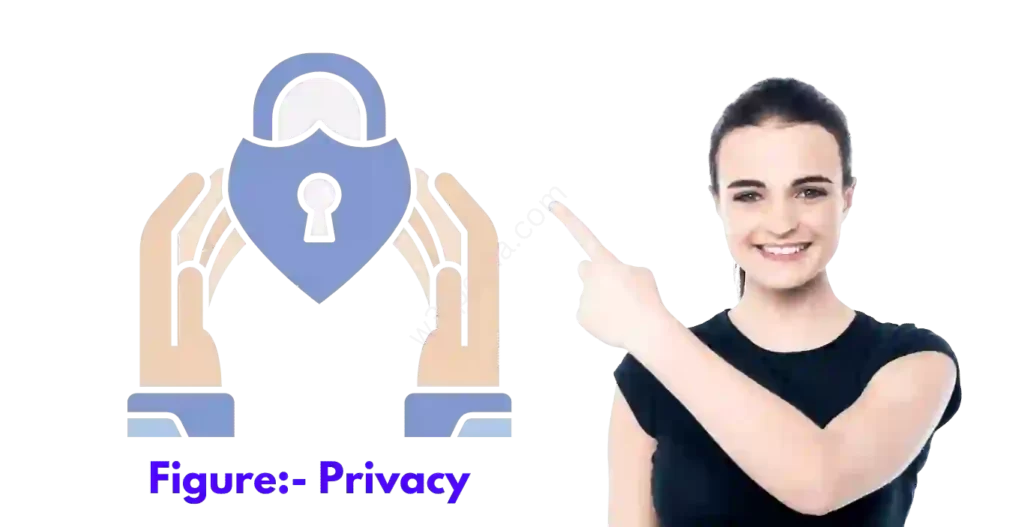Hello and Welcome Dear Readers!
The Data Communication and Networking Course on this Free Educational Website covers data transfer, however this tutorial and course focus on “secure data transfer.” Data is converted to unreadable format before Sending and again it is converted back to readable format when it reaches its destination. This tutorial discusses conversions to secure the transfer of data. A computer is accessible to others if it is connected to a network. In this tutorial, security measures are discussed for Sending sensitive data over a network.
Table of Contents
ToggleIntroduction
People of almost all ages frequently use computers because they are so popular. Often we need to give our personal information to a computer e.g. while creating an email account, shopping online, visiting a hospital, or taking admission to a school. We expect that provided information will not be shared with others. Protecting data from malicious users is called data privacy or information privacy.
Ethical Issues Related to Data Security
- Ethical standards constitute the basis of all security systems.
- It is our ethical responsibility to keep other people’s data secure if we possess it.
The following are some examples of data security issues:

Confidentiality & Privacy
It is indeed taking care of others to ensure the confidentiality of their information.

For example, it could be harmful to my business if a bank shared information about my banking transactions with my competitors. Similar rules apply to phone companies regarding the confidentiality of invoices and bills. In the era of computers and the Internet, maintaining privacy and confidentiality has become challenging.
As computers are used increasingly often, a lot of data is gathered and stored. Credit cards, fundraising efforts on behalf of organizations, surveys, home shopping services, driver’s licenses, arrest records, and medical records are a few examples of the types of sources for this information.
The misuse of computerized data is one of the potential threats to privacy. The confidentiality of data is violated if a corporation provides phone numbers and email addresses to another business for marketing purposes.
Privacy
Making unauthorized copies clearly violates privacy. It could be a piece of poetry, art, software, a video, a book, a design of a building, or any other work that is protected by copyright laws.

The unauthorized use, distribution, or duplication of software is referred to as software privacy.
Software that includes a confidential text known as the software key is provided by some software vendors.
Those who purchase the software are the only ones who receive this key. In this approach, the installation of illegal copies is stopped.
Some people start their search for the key by going against the law. This is referred to as “cracking the key.”
Types of Software Privacy include:
Soft lifting:
Accessing and installing a copy of the software that you borrowed from a colleague.
Overusing clients and servers:-
Installing more software than is permitted by your license.
Hard-disk loading:-
Installing unlicensed software on new or reconditioned computers and selling it.
Counterfeiting:-
Duplicating and selling software having copyright.
Online Privacy:-
Typically involves downloading illegal software.
The software industry is prepared to battle back against software privacy. More and more court cases involving software protection are being heard in court.
Fraud and Misuse
Unauthorized activities may occur when computers are used in connection with the Internet.
Among these include:
- theft of services,
- the digital theft of money,
- And the loss of important data.

We occasionally get emails requesting us to click a link in order to change our password.
The website opens when we click the link and requests our username and password. If we provide our login and password, a malicious user will truly acquire our password.
Similar to how some emails claim we have won a major prize, such as a car, a house, or money, others try to trick us into believing this. For us to receive that prize, they require a small transaction charge. In reality, it’s just a scheme to fool people into parting with their cash.
Sometimes a malicious person appears as one of our friends in an attempt to gather confidential information. This is referred to as phishing.
Patent
- A patent is a tool for idea protection.
- You must obtain a patent for any ideas you have while conducting research on a certain subject.
- It grants you the authority to prevent others from using your inventive concept to create or market products.

Real-Life Example of Patent:-
If you are doing research in the medical field and give a new idea to treat a particular disease, some pharmaceutical companies can make medicines on the basis of your idea. Ethically, they must seek your permission before making medicines using your idea. They should also a certain amount upon sale of the medicine. For this purpose, you must get a patent.
Copyright Law
A patent is different from a copyright since copyright laws prevent the duplication of ideas or products, or things.
Copying is not allowed without permission.

Typically, we see a copyright symbol like the one in the figure if a product is copyright protected.
Example:
The tutorial you are reading and this website are both copyright protected. Therefore, copying it is forbidden.
Similarly, software products are mostly copyright protected. It means that we cannot copy them, like MS Windows, MS Office, etc. Copyright can deal with the misappropriation of data, computer programs, documentation, or similar material.
Trade Secrets
Trade secrets are usually the secrets that are playing an important role in the success of a company. They have a lot of value and usefulness for the company.

Keeping trade secrets in the computer science field is very important when more than one software companies develop the same product but one of them takes lead. For example, there are many free email services but few of them have significant competitive advantages over others.
Sabotage
Sabotage is a serious attack on a computer system. Some malicious users can attack the system while sitting remotely.

One can send viruses with some free software. A virus is a computer program written with negative intentions. It can change/destroy the information or sabotage precious data.
Safeguarding the Privacy of Others
Did you see the signs on the side of the road warning you that cameras were watching you like in the picture?

The Purpose of such notices is to alarm you about your privacy and keep you within certain rules and regulations.
Similarly, Speed cameras are announced before taking your picture or recording your video. These steps are just to safeguard your privacy. In the same way, when you give information to an organization, it is the duty of that organization to safeguard your privacy. Your Information is stored in NADRA (National Database and Registration Authority) along with information of your other family members. Therefore, it is the NADRA’s moral obligation to protect this data.
The majority of websites also make clear what information they gather about you and your computer and who they will share it with within their privacy rules, as is shown by an example in the figure.

Typically, people don’t read these policies. The majority of users mistakenly believe that the privacy policy provides them with complete privacy protection.
The website actually wants to let you know what measures they will take to protect your privacy.
Recommended Tutorial